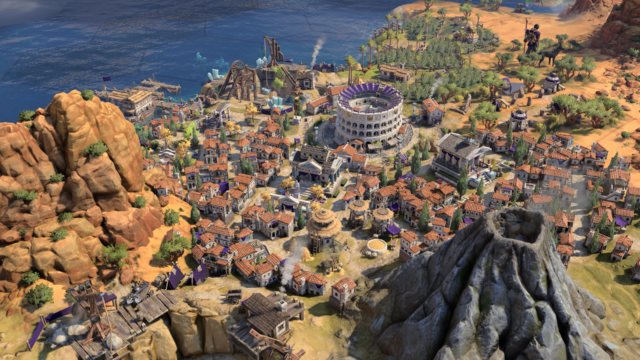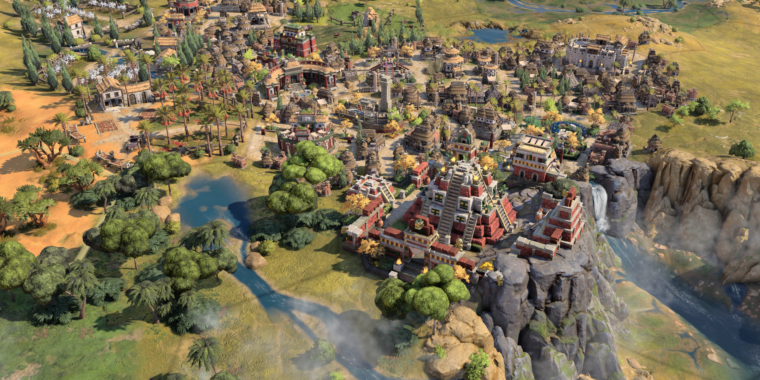2K Games
2K Games provided a flight from Chicago to Baltimore and accommodation for two nights so that Ars could participate in the preview opportunity for Civilization VII. Ars does not accept paid editorial content.
From squares to hexes, from tech trees to civic trees, over its more than 30 years across seven mainline entries, the Civilization franchise continues to evolve.
Firaxis, the studio that has developed the Civilization games for many years, has a mantra when making a sequel: 33 percent of the game stays the same, 33 percent gets updated, and 33 percent is brand new.
Recently, I had the opportunity to play Civilization VII, the next entry, which is due to launch in February 2025. The build I played was an early alpha build, but the bones of the game it will become were there, and it’s interesting to see which third Firaxis kept the same and which third it has reimagined.
It turns out that the core of the game that its developers won’t much want to change is the turn-to-turn experience. But in the case of Civilization VII, all bets are off when it comes to the overall arc of a long journey, from sticks and stones to space travel.
Rethinking the structure of a Civilization game
Most of the time, playing Civilization VII feels a lot like playing Civilization VI—but there’s one big change that spans the whole game that seems to be this sequel’s tentpole feature.
That’s the new Ages system. The long game is now broken into three segments: Antiquity, Exploration, and Modern. Each Age has some unique systems and gameplay, though most systems span all three.
Within each age, you’re given a handful of “Legacy Paths” to choose from. These map closely to the franchise’s long-standing victory conditions: Science, Economic, Cultural, and Military. The idea is that you pick the Legacy Path you want to pursue, and each Legacy Path has different success conditions that change across each of the three Ages.
These conditions are big and broad, and Firaxis thankfully hasn’t gotten too jazzy with them. For example, I played in the Age of Antiquity and pursued the Cultural path, so my goal was to build a certain number of Wonders before the end of the Age.
In some ways, this is similar to the boom-and-bust cycle of Dark and Golden Ages in Civilization VI, but I found it much more natural in VII. In VI, I often found myself making arbitrary-seeming choices I didn’t think made sense for my long-term strategy just to game the system and get the Age transition I wanted. In this new game, the Legacy Path objectives are likely to always be completely in line with the overall victory strategy you’re pursuing.
One of the advantages of this new structure is support for shorter games that aren’t just hyper-compressed versions of a larger game. Previously, the only way to play a game of Civilization that wasn’t a dozen or more hours long was to pick one of the faster game speeds, but that fundamentally changed how the game felt to play.

2K Games
Now, Civilization VII gives you the ability to play a match that’s just one Age, if you choose to.
The new Ages system is integrated with another big change: your choice of leader and civilization are no longer tied together when you start a new game, and they’re not set in stone, either.
Now you pick both a civilization and a leader separately at the start—and you can do some weird, ahistorical combinations, like Greece’s Alexander as the leader of China. Each leader and civilization offers specific bonuses, so this gives more customization of your playstyle at the start.
It doesn’t end there, though. At the end of each Age, you can essentially change civilizations (though as far as I could tell, you stick with the leader). Firaxis says it took inspiration for this feature from history—like the fact that London was a Roman city before it became an English one in the Medieval era.
Which civilization you can transition to is dictated by what you did within the Legacy Path system, among other things.
The amount of time I had to play the game was just enough to almost finish the Antiquity Age, so I didn’t get to see this in action, but it sounds like an interesting new system.











